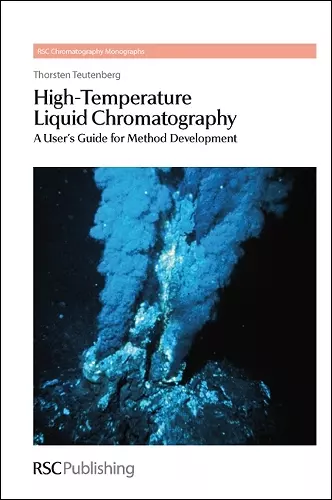High-Temperature Liquid Chromatography
A User's Guide for Method Development
Format:Hardback
Publisher:Royal Society of Chemistry
Published:3rd Jun '10
Currently unavailable, and unfortunately no date known when it will be back

High-temperature liquid chromatography has attracted much interest in recent years but has not yet recognized its full potential in the chromatographic community. There is a widespread reluctance in industry to use temperature to speed up the separation process, influence the selectivity of a separation or implement novel detection techniques. However, the technology has now matured and could revolutionize chromatography as we see it today. Better equipment, such as heating systems able to generate faster heating rates, is becoming more readily available. Also, columns based on silica gel, which can withstand higher temperatures for an extended period, are now being introduced. Nevertheless, further technological and methodical efforts are needed to establish the method in a regulated environment like the pharmaceutical industry. This is the only text to cover all the practical aspects, as well as the underlying theoretical principles, of setting up an HPLC system for high temperature operation. It is not intended solely for academics but will also benefit the researcher interested in more practical considerations. The author is a recognized expert and has conducted several studies with partners from industry to validate the method. Many real examples from these studies have been included in the book. The aim is to support practitioners in the creation of their own protocols without the need to rely solely on trial and error. The book starts with a brief definition of high temperature liquid chromatography before going on to cover: system set up; the heating system; mobile phase considerations; suitable stationary phases; method development using temperature programming; analyte stability, and special hyphenation techniques using superheated water as a mobile phase. In each chapter, experimental data is used to illustrate the main statements and the advantages over conventional HPLC are evaluated. The book concludes with a critical outlook on further developments and applications underlining the necessary advances needed to make high temperature HPLC more robust.
High-temperature liquid chromatography has attracted much interest in recent years but has not yet recognized its full potential in the chromatographic community. There is a widespread reluctance in industry to use temperature to speed up the separation process, influence the selectivity of a separation or implement novel detection techniques. However, the technology has now matured and could revolutionize chromatography as we see it today. Better equipment, such as heating systems able to generate faster heating rates, is becoming more readily available. Also, columns based on silica gel, which can withstand higher temperatures for an extended period, are now being introduced. Nevertheless, further technological and methodical efforts are needed to establish the method in a regulated environment like the pharmaceutical industry. This is the only text to cover all the practical aspects, as well as the underlying theoretical principles, of setting up an HPLC system for high-temperature operation. It is not intended solely for academics but will also benefit the researcher interested in more practical considerations. The author is a recognized expert and has conducted several studies with partners from industry to validate the method. Many real examples from these studies have been included in the book. The aim is to support practitioners in the creation of their own protocols without the need to rely solely on trial and error. The book starts with a brief definition of high-temperature liquid chromatography before going on to cover: system set up; the heating system; mobile phase considerations; suitable stationary phases; method development using temperature programming; analyte stability, and special hyphenation techniques using superheated water as a mobile phase. In each chapter, experimental data is used to illustrate the main statements and the advantages over conventional HPLC are evaluated. The book concludes with a critical outlook on further developments and applications underlining the necessary advances needed to make high-temperature HPLC more robust.
ISBN: 9781849730136
Dimensions: unknown
Weight: 1082g
220 pages